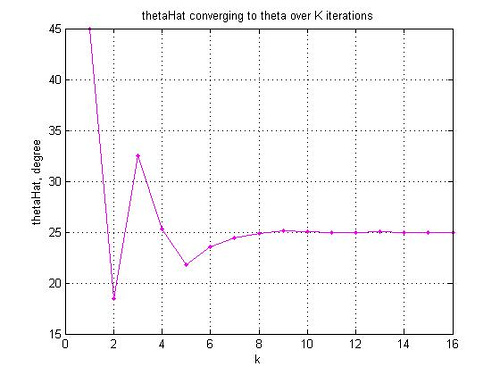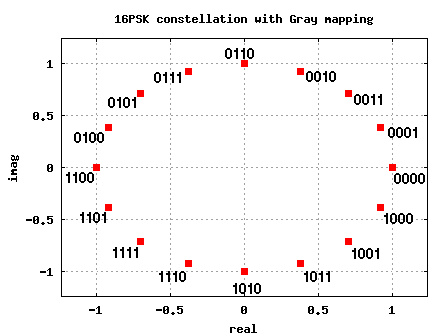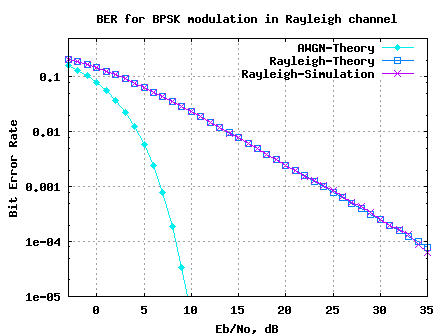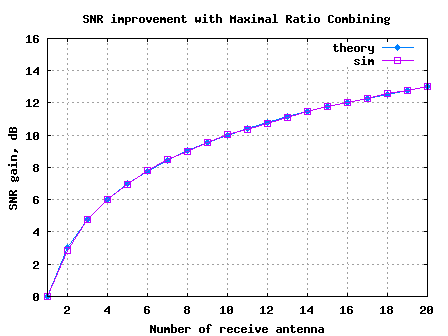
CORDIC for phase rotation
My understanding of the CORDIC (Co-ordinate Rotation by DIgital Computer) thanks to the nice article in [DSPGURU-CORDIC].

My understanding of the CORDIC (Co-ordinate Rotation by DIgital Computer) thanks to the nice article in [DSPGURU-CORDIC].
After a gap of around 7 months, we decided to migrate to a new template (recall, last time we changed was in May 2008). The template which we decided to use is designed by Elegant Themes. They have a wide array of themes and I chose to use the Who’s Who theme.

In this post, let us derive the theoretical bit error probability for 16PSK modulation using Gray coded mapping. For deriving the equation, we will refer material from the following posts: (a) Symbol Error Rate for 16PSK (b) Gray code to Binary code conversion for PSK (c) Binary to Gray code conversion for PSK As discussed…

Long back in time we discussed the BER (bit error rate) for BPSK modulation in a simple AWGN channel (time stamps states August 2007). Almost an year back! It high time we discuss the BER for BPSK in a Rayleigh multipath channel. In a brief discussion on Rayleigh channel, wherein we stated that a circularly…

This is the third post in the series discussing receiver diversity in a wireless link. Receiver diversity is a form of space diversity, where there are multiple antennas at the receiver. The presence of receiver diversity poses an interesting problem – how do we use ‘effectively‘ the information from all the antennas to demodulate the…

In the past, we had discussed two transmit, one receive antenna Alamouti Space Time Block Coding (STBC) scheme. In this post, lets us discuss the impact of having two antennas at the receiver. For the discussion, we will assume that the channel is a flat fading Rayleigh multipath channel and the modulation is BPSK.

In the recent past, we have discussed three receive diversity schemes – Selection combining, Equal Gain Combining and Maximal Ratio Combining. All the three approaches used the antenna array at the receiver to improve the demodulation performance, albeit with different levels of complexity. Time to move on to a transmit diversity scheme where the information…

Two points suffice for drawing a straight line. However we may be presented with a set of data points (more than two?) presumably forming a straight line. How can one use the available set of data points to draw a straight line? A probable approach is to draw a straight line which hopefully minimizes the…

In this post lets discuss a closed-loop transmit diversity scheme, where the transmitter has the knowledge of the channel. As there is a feedback path required from the receiver, to communicate the channel seen by the receiver to the transmitter, the scheme is called closed-loop transmit diversity scheme. Recall that the transmit diversity using Space…

Thanks to the nice article from Xilinx TechXclusives [XLNX-TECH], let us try to understand the probable digital implementation of resistor-capacitor based low pass filter. Consider a simple RC filter shown in the figure below. Assuming that there is no load across the capacitor, the capacitor charges and discharges through the resistor path. Figure: RC low…
From the previous posts on Linear Regression (using Batch Gradient descent, Stochastic Gradient Descent, Closed form solution), we discussed couple of different ways to estimate the parameter vector in the least square error sense for the given training set. However, how does the least square error criterion work when the training set is corrupted by…
In problem 9.14 of DSP-Proakis, the objective is to analyze the effect of zero-order interpolation and first-order interpolation to double the number of samples in the sinusoidal while keeping the sampling frequency unchanged. My take: The first part of the problem (a) is to generate the sequence having half the frequency of . For zero-order…

Last week, I received an email from Mr. Kishore. He was wondering about the physical significance of negative frequency. Does negative frequency really exist? Though I have seen conflicting views on the net (thread in complextoreal.com, thread in comp.dsp), my perspective is that negative frequency exist. The concept of negative frequency helps me a lot…

Question 15 on communication from GATE (Graduate Aptitude Test in Engineering) 2012 Electronics and Communication Engineering paper. Q15. A source alphabet consists of N symbols with the probability of the first two symbols being the same. A source encoder increases the probability of the first symbol by a small amount and decreases that of the…